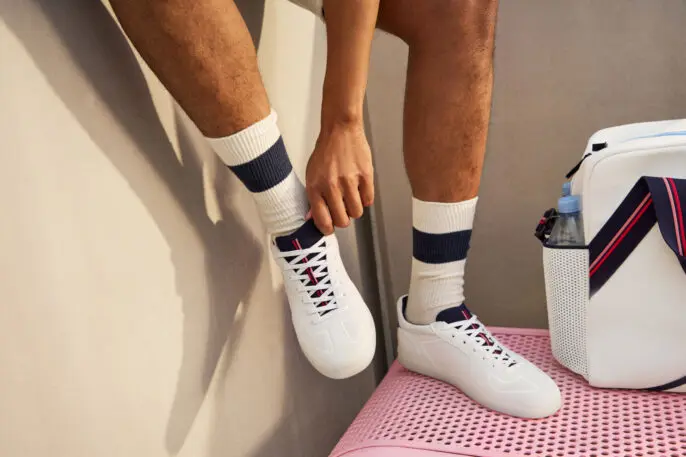Every year, consumers buy 480 billion plastic drinking bottles globally and then recycle less than 10% of them. Evian churns out 2 billion single-use bottles of water annually. At the U.S. Open tennis championship, where the brand is the official water sponsor, spectators buy and toss tens of thousands of Evian bottles.
A new collaboration between Evian and fashion brand Rothy’s looks to make a small dent in this footprint by transforming these old bottles into chic new goods. Last year, the two brands collected 72,000 bottles from the U.S. Open, which Rothy’s has recycled into a tennis-specific capsule collection, including sneakers, racket bags, and visors. Today, a week before this year’s Open begins, the pieces drop on Rothy’s website and its New York stores. “This is an effort to encourage customers to recycle by demonstrating, very literally, what old bottles can turn into,” says Leeni Haemaelaeinen, Evian’s marketing director.

For this project, the brands collected the Evian bottles from stadiums in New York City where the U.S. Open takes place, shipped them to China to be processed, then sent them to the Rothy’s factory. Rothy’s designers created pieces inspired by old-school tennis gear. All the pieces are white and feature blue, pink, and red stripes. “We want to keep these pieces out of landfill for as long as possible,” says Lavion Gibson, Rothy’s director of product design. “We stick to classic silhouettes that will not come and go with trends.”

Recognize your company's culture of innovation by applying to this year's Best Workplaces for Innovators Awards before the extended deadline, April 12.
